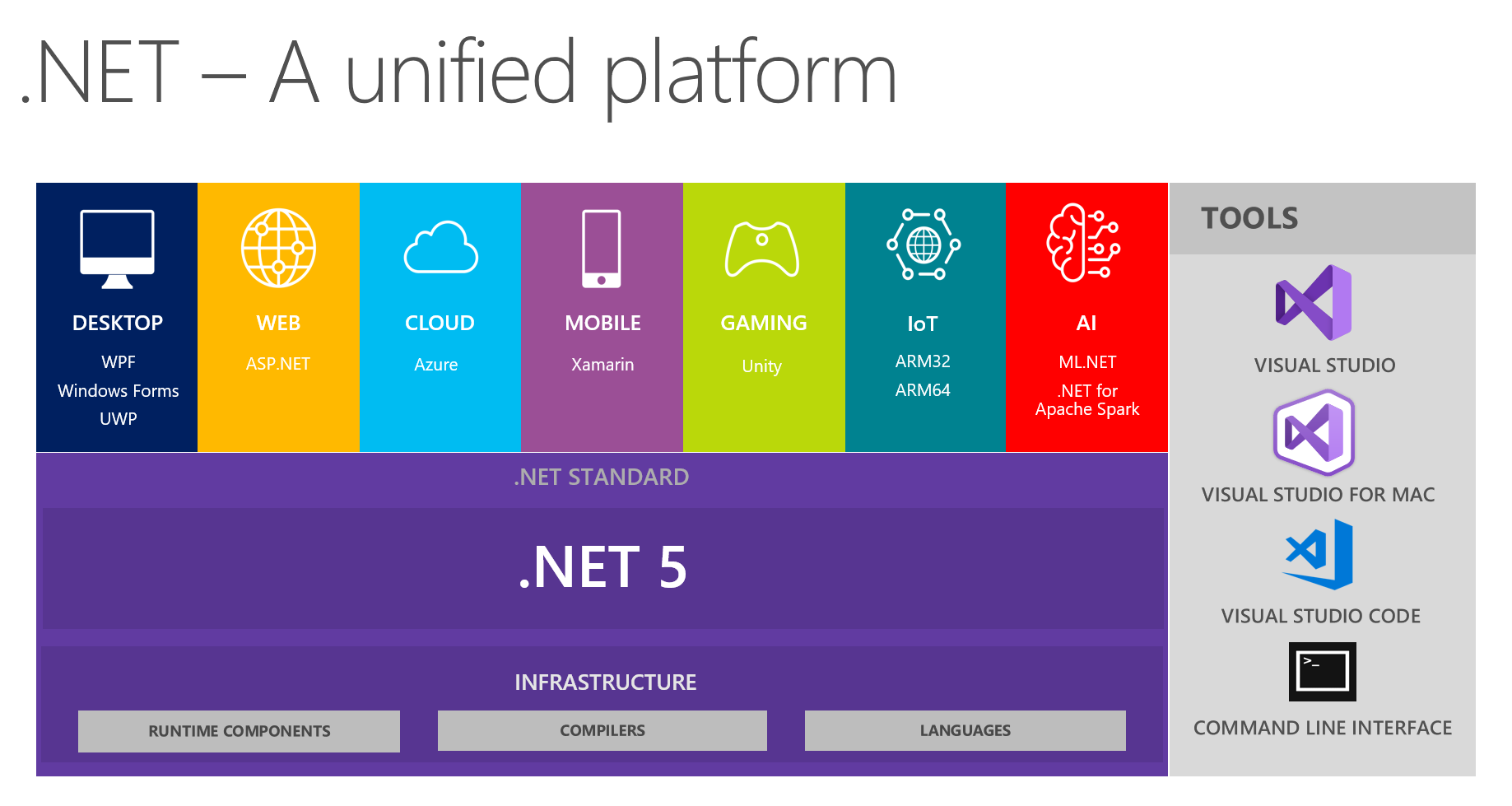Unity
Microsoft very recently released their new framework standard called .NET 5.0 on November 10th, 2020. The first preview (called v5.0.0-preview.1) was released on March 16th, 2020. This means, that there has been 240 days of development, bug-fixing and fine-tuning by Microsoft and the open-source community.
.NET 5.0 tries to unify Microsoft's irregular .NET Framework, .NET Core and other SDKs and frameworks to be a one-for-all SDK. You might remember how Microsoft tried to push Unified Windows Platform (UWP) a few years back. In spite of a lot of funding and manpower put into the project, it, for all intents and purposes, failed completely. Maybe this time Microsoft has learned from the past experience and will not let this new standard fail.

Source: https://devblogs.microsoft.com/dotnet/introducing-net-5/
A major performer
First of all, the performance gains are notable. .NET 5.0 brings a lot of optimisations at the lowest assembly level. The developers of the framework have radically reduced the amount of assembly code the higher level C# code builds into. Further more, the changes inside the framework itself to be more resource-efficient are obvious. Arrays, objects, types and and many more features are mostly twice as fast as .NET Framework 4.8 and about 25 % faster (sometimes more) than .NET Core 3.1. This is very exciting for C# developers, not to mention the various language-specific upgrades like containers it also brings. But what does it mean for Microsoft Azure and the development of any software on it?
Awesome, but lacking on Azure for now
The positive side is that the big performance upgrades are directly correlated with your cost of operations, if you're using a pay-as-you-go subscription. Since .NET 5.0 uses less CPU cycles, it will cost less for the same operation than an application running .NET Framework 4.8 or .NET Core 3.1. That means you will need fewer CPUs to run the same application with the same load. We at AppDS can help you transition to the bleeding-edge of the software side. For now, we can consult and help assess if you need to transition right now, or should you wait, see our page on Microsoft Azure to learn more.
The negative side is that some of Azure's services do not work with the new .NET 5.0. Such services as Azure Functions, for example, are not working yet. But developers at the official GitHub repository of the net framework said, that it will be available as a preview until the end of this year. Source.
Conclusion
In the end, the new framework is a right step forward for Microsoft, since the many different frameworks and standards were previously separate. This makes life easier for everyone, from software developers to project managers, since there is only one standard and framework, not two different ones that have to be compatible with each other.
For the performance, .NET 5.0 is a very nice upgrade, but knowing, that .NET 6.0 will be available some time next year and only that one will be a long-time support (LTS), so for mission-critical applications we would advise to hold on and wait for the next version for upgrading a current project. Unless .NET 5.0 has features that you need, or you are starting a new project.
If you have any questions or inquiries, you can fill our contact form and we will get back to you.
